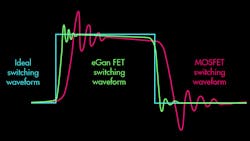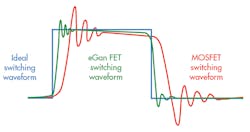This file type includes high resolution graphics and schematics when applicable.
Class D audio amplifiers are able to fulfill the requirements for audio applications such as mobile handsets, Bluetooth/wireless speakers, and vehicles, to name a few. These amplifiers dissipate less heat, extend battery life in portable devices, and are much more efficient than linear audio amplifier classes, such as Class A, B, and AB. They are small in weight and size, which makes them suitable for applications like the ones mentioned earlier.
Class D amplifiers also are extremely efficient (often up to 90% or higher) because the output transistors are fully turned ON or OFF during operation. Therefore, there are no power losses in the output device. Class D amplifiers use metal-oxide-semiconductor field-effect transistors (MOSFETs) as switching devices. Typically, they use a pulse-width-modulation (PWM) topology with a fixed-frequency to produce a PWM equivalent of the analog input signal. But they use lowpass LC filters to extract the amplified audio signal, thereby increasing cost and board space.
New filterless modulation techniques eliminate or minimize the use of external filters. Removing LC filters, however, invites the possibility of electromagnetic (EM) radiation caused by the amplifier switching at a frequency much higher than the highest audio frequency to be amplified. To deal with this problem, solutions from semiconductor vendors like Texas Instruments and Maxim Integrated offer filterless spread-spectrum modulation and feedback technique schemes with different output configurations (e.g., one-channel, two-channel, etc.). They mitigate EMI and improve poor Total Harmonic Distortion Plus Noise (THD+N) performance.
Developments in power semiconductor technology had created a new approach for handling higher efficiency with minimal audio distortion. For example, Class D amplifiers can also be developed using enhancement-mode GaN (eGaN) FETs. Efficient Power Conversion’s eGaN FET-based Class D amplifiers claim to switch many times faster than power MOSFETs and do not have any reverse recovery charge. As a result, the dead-time—typically 25 ns for silicon power MOSFETs—can reportedly be reduced by 80%, to 5 ns or less (Fig.1). This means that the turn-on and turn-off delay, as well as the rise and fall times for eGaN FETs, will be much faster and contribute less to signal distortion. Very low THD+N also can be achieved, while minimizing Transient Intermodulation Distortion (T-IMD) and the EMI emissions from the amplifier. The EPC9106 reference design has demonstrated 96% efficiency at 150 W / 8 Ω, and 92% efficiency at 250 W / 4 Ω.
With advancements in class D amplifiers, they are now being used in more applications than linear amplifiers used to dominate such as home theaters and televisions. The new solution from Efficient Power Conversion (EPC) for Class D amplifiers, for instance, looks very promising and it might be widely adopted by audio manufacturers in the future. According to Research and Markets, the Class D audio amplifier market is expected to be worth $2.76 billion by 2022, growing at a CAGR of 17.4% between 2016 and 2022. The two-channel Class D audio amplifier currently holds the largest market share and is expected to grow at the highest rate during the forecast period, as it is commonly used in in-car audio and television sets.
References
- Efficient Power Conversion website (http://epc-co.com/epc).
-
Class D Amplifiers: Fundamentals of Operation and Recent Developments, Maxim Integrated.
About the Author
Maria Guerra
Power/Analog Editor
Maria Guerra is the Power/Analog Editor for Electronic Design. She is an Electrical Engineer with an MSEE from NYU Tandon School of Engineering. She has a very solid engineering background and extensive experience with technical documentation and writing. Before joining Electronic Design, she was an Electrical Engineer for Kellogg, Brown & Root Ltd (London. U.K.). During her years in the Oil and Gas Industry she was involved in a range of projects for both offshore and onshore designs. Her technical and soft skills bring a practical, hands-on approach to the Electronic Design team.


